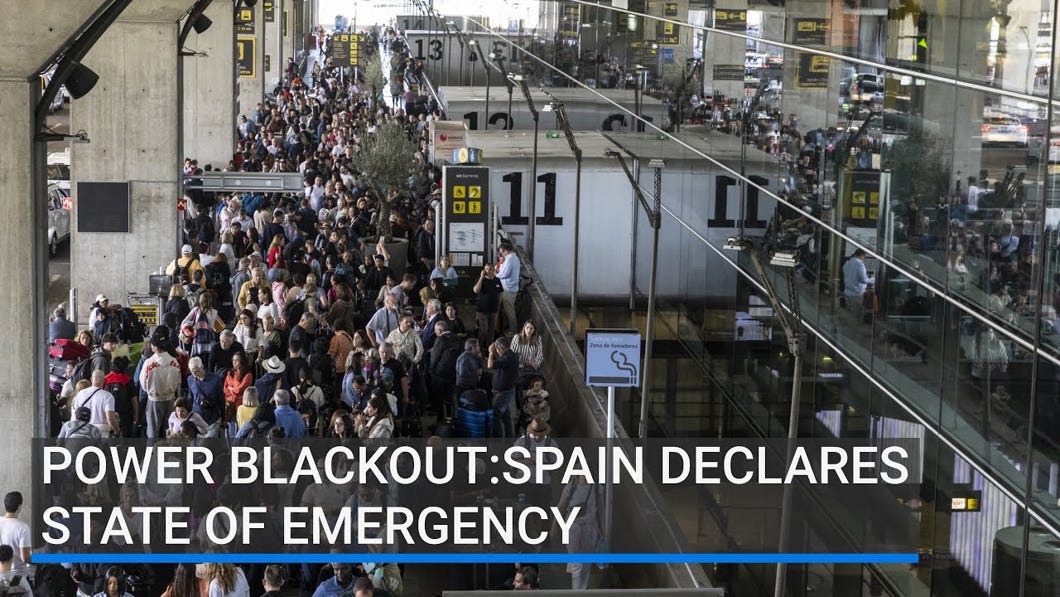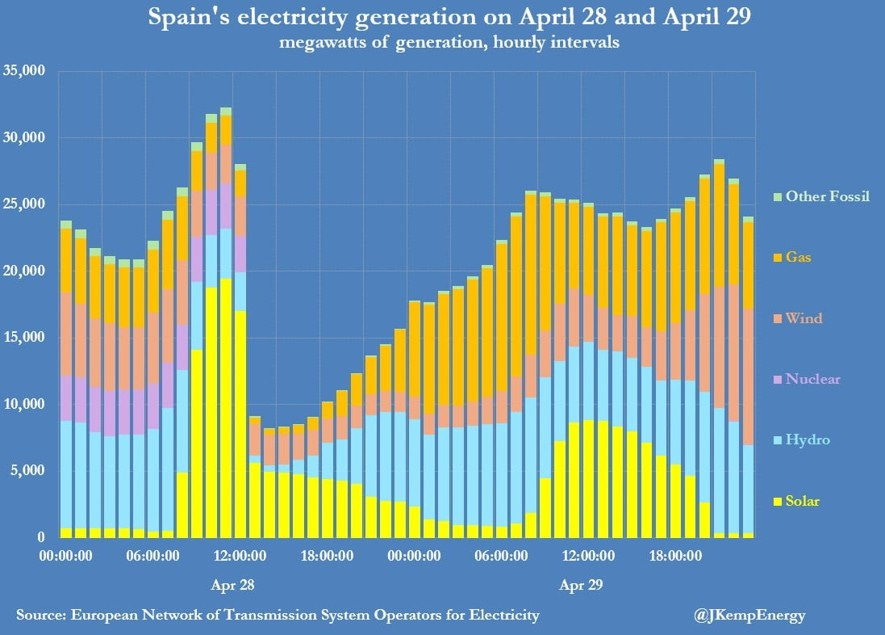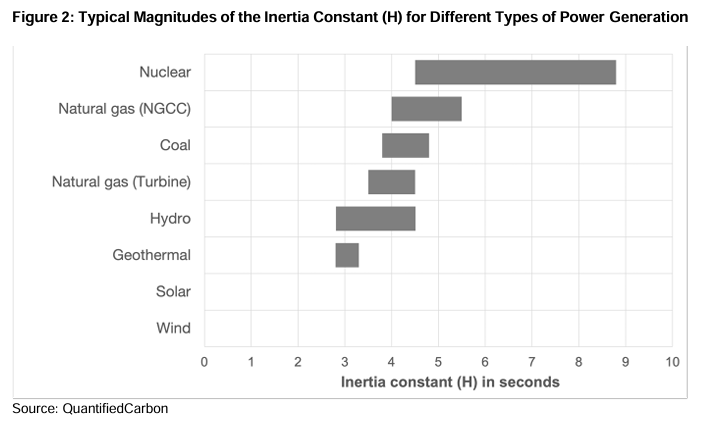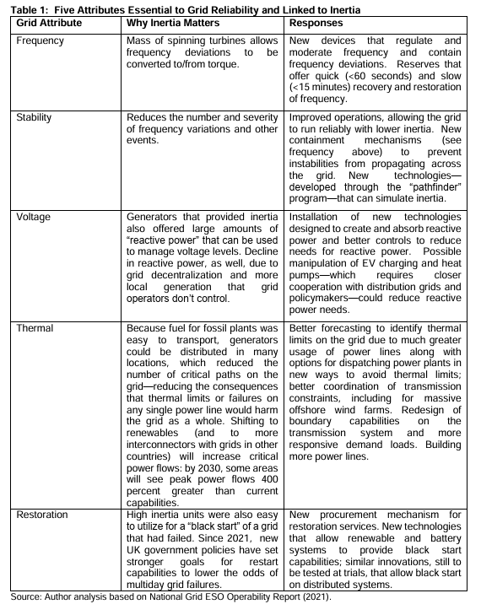|
 |
I’ve spent some time this week looking into the massive blackout that struck Spain and Portugal a few days ago, and today I share some of what I’ve learned. I start with a short primer on grid operations and follow that with some initial thoughts on the significance of the Iberian blackout.
The Financial Times explains what happened:
[E]arlier this week, Europe experienced one of its worst ever power outages in Spain and Portugal, stretching from around midday on Monday until Tuesday morning. The episode underscores how advanced economies also cannot afford to be complacent about their electricity resilience.
Power has now been restored to the Iberian peninsula. But the scenes of gridlock and confusion will not be quickly forgotten. . .
What caused the outage remains unclear. Authorities say Spain lost 60 per cent of its electricity supply in just five seconds on Monday. The frequency on its grid dropped suddenly, triggering power stations to switch off, which then cascaded on to Portugal.
Mark Nelson, of Radiant Energy, shared an informed perspective from an anonymous Spanish energy expert on the causes of the blackout on X/Twitter yesterday (and translated from Spanish):
What has happened on April 28 has a well-located origin: the Aragón-Catalonia corridor, which is one of the most important electric highways in Spain. There is not only the electricity produced by our solar and wind farms in the northeast, but also the electricity that we import from France. This international interconnection, although weak (it can only contribute 3% of our demand, well below the minimum of 10% that marks the EU), in times of stress is essential to balance the network.
At 12:32 p.m., in that Aragón-Catalonia corridor there was an electric shock. What exactly does "shake" mean? It means that suddenly and abnormally, the power that flowed through those lines began to vary violently, rising and falling in a very short time. . .
What is known is that as a consequence of that shake, the interconnection with France jumped: we were isolated just at the worst time, when the peninsula needed external support to stabilize.
Without that French help, the frequency of the peninsular network (which should always be 50 Hz exact) began to drop quickly. The frequency is like the heartbeat of the network: if it falls too much, the systems understand that the patient (the network) is collapsing and automatically disconnected so as not to self-destruct. Thus, in just five seconds, the solar and wind farms were turned off —very sensitive to frequency variations—, 15 GW of power was lost suddenly (60% of all the electricity generated at that time), and the network could not take it anymore: it was It collapsed completely, showing the Redeia Platform (REE) a "0 MW" nationwide. That does not mean that all the turbines were physically turned off, but there was no generator synchronized at the common frequency of 50 Hz. It was, for practical purposes, a country off.
What is grid frequency? The Oxford Institute for Energy Studies explains:
The grid frequency is the speed of rotation of the rotating parts of the power system and is measured in Hertz (Hz), i.e., oscillations per second.¹ Synchronous areas, meaning areas that share a grid frequency and thus also share the task of maintaining that frequency, often do not align with country borders or even the jurisdiction of electricity trading systems. For example, the US grid is split into three synchronous grids (or “interconnections”). By contrast, twenty-four nations across continental Europe share a common synchronous grid. The design frequency of all global power grids is either 50 Hz or 60 Hz.²
To maintain the frequency at this predetermined stable level, a precise balance between production and consumption across the system is required. The objective for "normal operation" is that the frequency should be kept +/- 0.5 Hz from the nominal level, in most grids the system enters "emergency operation mode" and can suffer partial blackouts, both planned and unplanned. If the deviation becomes even more serious it may cause a system failure and breakdown, with a complete loss of power supply. Such a situation can take significant time to restore, with extreme consequences both economically and to human well-being.
One way that grid frequency is maintained at a constant level is through system inertia, defined by ERCOT (Electricity Reliability Council of Texas) as follows:
Power system inertia is defined as the ability of a power system to oppose changes in system frequency due to resistance provided by rotating masses. The level of inertia present in a system at any time is dependent on the amount of kinetic energy stored in rotating masses of synchronously-interconnected machines, including various types of generators as well as synchronously operating motor loads. As penetration levels of non-synchronous, inverter-based generation resources (e.g., wind, solar, batteries) increase in the ERCOT generation mix, the system’s synchronous inertia will inevitably decline, especially during low load conditions.
System inertia determines the initial rate of frequency decline after a sudden loss of generation.
Let’s unpack that a bit. High system inertia means that a reduction in grid frequency — such as caused when a power plant unexpectedly goes offline — will be mitigated to some degree, ideally preventing the system from cascading failure. Lower inertia provides less mitigation of frequency reduction and thus results in a greater chance for systemic failure.
Returning to the comments of the anonymous Spanish energy expert shared above — When the Aragón-Catalonia electricity corridor experienced a shock, and went offline, the Spanish grid’s frequency began to drop and there was insufficent inertia in the system to prevent a cascading system failure — resulting in the massive blackout.
The figure below, via John Kemp, shows what happened next.
 |
The figure indicates why the Spanish grid had such low inertia at noon on April 28, making it difficult to buffer the loss of the French interconnection — At the moment that electricity was lost, generation was primarily solar and wind, which contribute no inertia to an electrical grid, as you can see in the figure below.
 |
Nuclear generates the most system inertia followed by natural gas (combined cycle). The Oxford Institute for Energy Studies explains:
[The figure] reflects that the heaviest rotating masses on any grid, which often provide the highest inertia both in relative and absolute terms, are the steam turbine sets of large nuclear power plants. For the largest individual nuclear units with a power rating above 1200 megawatts (MW), the shaft string with its turbines and generator rotors can be up to 70 meters long and have a total rotating mass exceeding 1100 tons. Turbines this large operate at “half speed,” meaning this mass is rotating at half the frequency of the grid (1500 revolutions per minute for 50 Hz grids, 1800 for 60 Hz grids), to limit tensile stress. It takes a huge amount of energy to either speed up or slow down such a heavy component, which is the intuition behind the dampening effect such a turbine has on any disturbance in the grid.
The impact of increasing penetration of wind and solar energy on grid stability has been long recognized. In 2009, for instance, the Federal Energy Regulatory Commission requested a study of the electricity reliability risks of increasing wind and solar.
Helping to maintain a constant frequency on the grid is not the only benefit of system inertia. The table below — from OIES 2023 — shows a range of reasons why inertia matters for grid reliability.
Can a grid be operated without the inertia provided by conventional power plants? It appears that no one knows. The National Renewable Energy Laboratory concluded in 2020:
The costs (or need) to develop a system that can reliably operate under near zero-inertia conditions has yet to be analyzed in detail, particularly in comparison to maintaining the current synchronous-based system with sufficient modification to accommodate very high levels of VG [variable generation] penetration.
Here are some tentative conclusions drawn from this review:
Nuclear power not only is carbon-free, but it contributes significantly to grid reliability;
Solar and wind, if at high levels of production, create grid instabilities and risks;
The evolution of energy systems has moved forward without sufficient attention to risks and vulnerabilities resulting from system change;
System inertia was a benefit of large, baseload power generation that has been underappreciated. No longer.
The overarching lesson I take from Spain’s blackout is that whatever role in electricity generation that solar and wind have in the future, that role should be built on a foundation of nuclear power, supplemented by dispatchable natural gas. Somehow I doubt that the Iberian blackout will be the last one due to low system inertia.
The easiest thing you can do to support THB is to click that “♡ Like”. More likes mean that THB gets in front of more readers!
Comments welcomed! As always, THB extends an open invitation to energy system experts to offer a critique of or supplement to the analysis here. Let’s discuss!
THB depends upon your support. Please consider a subscription, a gift, or an upgrade.
The frequency corresponds to how often the voltage goes from its highest point to its lowest point and back to its highest point. If the mains frequency is ~50 Hz, this means that the electrons in the power lines go back and forth fifty times in a second, or that the voltage goes from 325 V down to -325 V and back to 325 V fifty times per second in your electrical outlet. The so-called effective mean voltage in such a system is 325 V/√2 = 230 V.
Grids with 50 Hz include all of Europe, Africa, the Middle East (with the exception of Saudi Arabia), and Asia (with the exception of the Philippines, Taiwan, South Korea, and western Japan), and South America south of Bolivia. Grids with 60 Hz include the United States, Canada, Mexico, Central America and the Caribbean, and northern South America (i.e., Brazil and Peru).
